Are you a Quiet Speculation member?
If not, now is a perfect time to join up! Our powerful tools, breaking-news analysis, and exclusive Discord channel will make sure you stay up to date and ahead of the curve.
With data reduced to a relative trickle and the overall metagame picture clouded, there hasn't been much information to work with. However, the data from SCG Regionals is always a strong indicator of the US metagame, so today I'll be looking at the data. While there is very significant result to dig into, the overall picture is very positive for Modern's health. Hopefully, the outlier begins to correct itself, or it will make for a poor Pro Tour Mythic Championship in London.
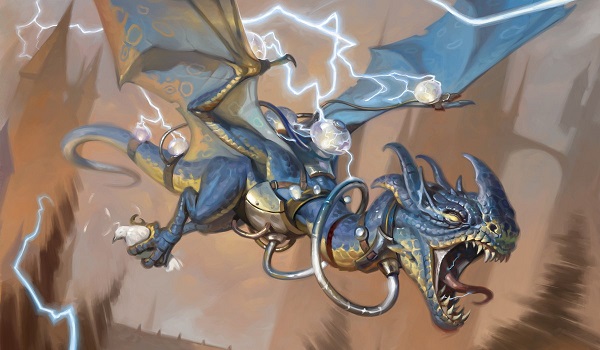
Regionals Data
As I'm writing this, ten of eleven Regionals have posted their Top 8 (why is New Jersey always last to report?), but it will take a truly insane result from there to change what I'm seeing in the available data. In the past, Regionals have been fairly staid affairs that don't show much deviation from the established metagame. This one is a different story.
| Deck Name | Total |
|---|---|
| Izzet Phoenix | 18 |
| Mono-Green Tron | 5 |
| UW Control | 5 |
| Amulet Titan | 4 |
| Dredge | 4 |
| Ad Nauseam | 4 |
| Affinity | 4 |
| Whir Prison | 2 |
| Humans | 2 |
| As Foretold | 2 |
| Hardened Scales | 2 |
| Burn | 2 |
| Mono-White Martyr | 2 |
| Colorless Eldrazi | 2 |
| Merfolk | 2 |
| Titan Shift | 2 |
| The Rock | 2 |
| Grixis Death's Shadow | 2 |
| Grixis Delver | 1 |
| UW Spirits | 1 |
| Counters Company | 1 |
| Eldrazi Taxes | 1 |
| Storm | 1 |
| GB Tron | 1 |
| Shadow Zoo | 1 |
| Jund | 1 |
| Infect | 1 |
| Bogles | 1 |
| Abzan | 1 |
| Bant Spirits | 1 |
| Jeskai Tempo | 1 |
| Grixis Control | 1 |
That is... an anomalous amount of Izzet Phoenix. It's a domination the standing that I've not seen since Eldrazi Winter. On the one hand, I'm not surprised. Phoenix is a popular deck and has been doing well. However, this quantity of placements is in such excess over the other data that I can only regard it as an outlier result. I refuse to believe the deck is that much better than anything else.
Other than the Izzet explosion, the results are very much what I'd expect. The overall picture looks very similar to what I'd expect for Modern, and shows considerable strategic diversity. This gives further credence to Phoenix being an outlier rather than a Tier 0 situation, and warrants further investigation.
Firebird Over the Format
First of all, let me be clear: This is not an Eldrazi Winter scenario. I know that there's plenty of grumbling about Faithless Looting going around, but Phoenix is far from unbeatable. It is a powerful deck, but it has a number of vulnerabilities that can be, and in some cases already are being, exploited.
Natural Result
Given the amount of visibility and coverage that Arclight Phoenix has received in Modern, it is natural for it to have this level of presence. The decks of a given tier are fairly even power-wise. What separates them is popularity and relative positioning. And Phoenix is very popular and very well-positioned.
Being the type of deck that players have longed for in Modern is another draw. It's fun to emulate Legacy with lots of cantrips before ending the game with big threats, and Izzet Phoenix does that arguably 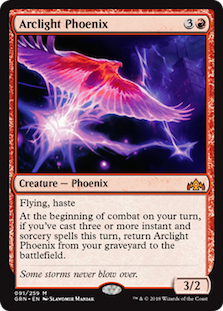 better than any other deck in Modern's history. The other factor is that there's a pretty similar deck in Standard. While not all the Standard version run Phoenix itself, the core gameplay of lots of cantrips is still there. It just makes financial sense for some players to have one deck in both formats.
better than any other deck in Modern's history. The other factor is that there's a pretty similar deck in Standard. While not all the Standard version run Phoenix itself, the core gameplay of lots of cantrips is still there. It just makes financial sense for some players to have one deck in both formats.
These factors are bolstered by Phoenix being very well-positioned, thanks in large part to Thing in the Ice. Without Thing, Izzet would have to dedicate more space for creature interaction, since it's quite vulnerable when it doesn't immediately spit out 3/2 fliers. Thing solves all the creature problems and exploits the tempo advantage perfectly. It is also the perfect time for Thing. The end of 2018 was defined by creature decks, specifically Bant Spirits with Humans holdover. Control, Tron, and midrange were already down, leaving the door open for a superior tempo deck to arise and feast on the aggro decks. Between the understandable popularity of a new deck relevant in several formats and laudable perfect positioning, I'm not surprised that Phoenix is everywhere. But I'd argue that doesn't mean it's necessarily too powerful for Modern.
Power Source
Why is Phoenix able to win so much? Phoenix naturally integrates two very different, but synergistic, gameplans. On the one hand, it has the plan most players fixate on, the Arclight Blitz. This is the broken start when Faithless Looting discards two Phoenixes, which leap into battle the following turn after a flurry of Manamorphose-fueled cantriping. Six damage per turn is threatening, though not the fastest 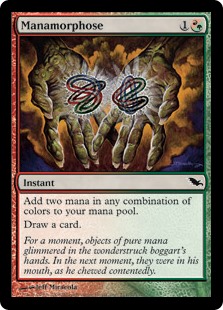 clock, and that's also the limit of the attack. If the Phoenixes are dealt with, Izzet only has four Lightning Bolts to finish the job. I'd argue that this is a bonus angle of attack, while the primary one is a more traditional, reactive tempo plan.
clock, and that's also the limit of the attack. If the Phoenixes are dealt with, Izzet only has four Lightning Bolts to finish the job. I'd argue that this is a bonus angle of attack, while the primary one is a more traditional, reactive tempo plan.
Against creature decks, flipping Thing annihilates their board and leaves a 7/8 to crash in with. That is an enormous defensive-reversal of a tempo swing. Even if there aren't creatures to bounce, attacking with a 7/8 on turn three is very powerful. Supported by Phoenixes and the other creatures, Thing threatens an overwhelming board position. However, it is very fragile. Without that enormous tempo swing, all Izzet has are big ground pounders and some fliers, and not too many of them. This should be easy for control decks to clean up and simply dominate. The fact that it isn't happening is puzzling.
Threat-Light and Fancy Free
Furthermore, I don't believe the tempo Thing plan nor the Arclight Blitz strategies are the core strategy of Izzet Phoenix. They're actually payoffs; and the real gameplan is to be Stormless Storm. What Izzet Phoenix is really good at is playing lots of cantrips in a turn. This does nothing by itself, but in the presence of a Thing or dead firebirds, it causes the deck to explode to life. Cantriping constantly means that eventually, Izzet will find one or more of its payoff cards. The question is whether that will be good enough to win. If it happens early, then it stands a good chance of working. However, the longer Izzet goes without anything on the board, the lower its chances are, regardless of what's in hand.
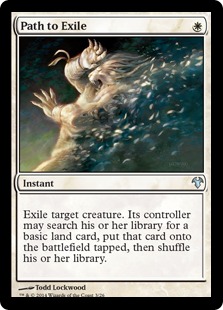 Simply put, Izzet Phoenix is meant to burn through cards and hopes to turn that into a win. There's no guarantee. While directly attacking that engine is a fine strategy, I'd actually recommend playing without fear. While Izzet is very capable of out-tempoing opponents in a variety of ways, that's the only way it can win. I'd go deeper and say that Izzet Phoenix is the most threat-light "good deck" I've seen in quite some time. At most there are 4 Arclight Phoenix, 4 Thing in the Ice, and 2-6 other threats in some combination of Pteramander and Crackling Drake. Everything is vulnerable to Fatal Push, and Phoenix leans heavily on recurring its namesake threat and drawing lots of cards to mask this vulnerability.
Simply put, Izzet Phoenix is meant to burn through cards and hopes to turn that into a win. There's no guarantee. While directly attacking that engine is a fine strategy, I'd actually recommend playing without fear. While Izzet is very capable of out-tempoing opponents in a variety of ways, that's the only way it can win. I'd go deeper and say that Izzet Phoenix is the most threat-light "good deck" I've seen in quite some time. At most there are 4 Arclight Phoenix, 4 Thing in the Ice, and 2-6 other threats in some combination of Pteramander and Crackling Drake. Everything is vulnerable to Fatal Push, and Phoenix leans heavily on recurring its namesake threat and drawing lots of cards to mask this vulnerability.
I'd expect Jund to pick up, as it has the removal and maindeck Scavenging Oozees to reliably out-grind Phoenix decks. Phoenix is very good at the moment because the format is removal-light. Given that Anger of the Gods is another maindeckable answer to Phoenixes (and to Dredge), the stage is set for midrange and control decks to start performing.
Change Your Sideboard
So why no midrange? I suspect perception is at fault again. Players are fixated on the Arclight Blitz, and are over-preparing for that attack rather than considering the deck as a whole. Some think that Surgical Extraction is necessary or even maindeckable, but I disagree. A few tweaks is all it takes to deal with Phoenix because, again, the deck relies on small numbers of threats and/or attacking with a swarm of firebirds, and depends on maintaining high velocity. As a Spirits player, Eidolon of Rhetoric is an extremely potent card against Phoenix. Most Phoenix lists run at most two Lightning Axes, so a single Rattlechains can seal the game with Rhetoric in play. Outside of Spirits, Damping Sphere is also quite potent, though easier to push past.
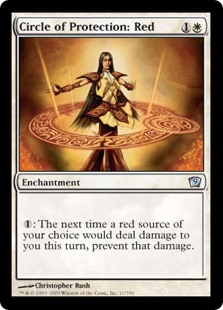 Still, other players are opting for more direct approaches. Most of the UW players in the sample picked up on Phoenix's vulnerabilities and have Settle the Wreckage and Celestial Purge to complement Path to Exile. Exile solves recursion, and Settle's better than Supreme Verdict in a recursive world. There's also the option to think laterally: a number of UW players took a page from 90's Magic and ran Circle of Protection: Red. A mooted Phoenix or Drake may as well be eliminated, and the Phoenix decks don't really run answers to enchantments.
Still, other players are opting for more direct approaches. Most of the UW players in the sample picked up on Phoenix's vulnerabilities and have Settle the Wreckage and Celestial Purge to complement Path to Exile. Exile solves recursion, and Settle's better than Supreme Verdict in a recursive world. There's also the option to think laterally: a number of UW players took a page from 90's Magic and ran Circle of Protection: Red. A mooted Phoenix or Drake may as well be eliminated, and the Phoenix decks don't really run answers to enchantments.
For non-white decks, graveyard hate is always an option, but the Regionals results indicate the best option was just to ignore Phoenix. Besides UW Control, all the top-performing decks were proactive, and as fast as Phoenix. Since Phoenix has very specific ways to interact, more specialized decks just bulldozed through, or dodged Thing and won anyway. This speaks to the vulnerability of Phoenix and suggests a new cycling in the metagame, though more data is necessary to say for sure.
The Rest of Modern
Again, Phoenix outlier aside, Modern looks quite healthy. There are a small number of decks with four or more results, but most are twofers and singletons. A few results are worth highlighting, as they showcase the impact of Phoenix's popularity.
UW Control as Phoenix-Killer
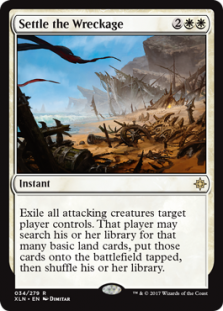 The first thing to discuss is UW being tied for second-most successful deck at Regionals. I've always thought the deck was underrated and unfairly dismissed. However, there have only been a few instances when UW has seen the play I think it should. Players always bemoan how hard it is to play control in an open metagame, but those that do have considerable success when they're prepared. As Regionals demonstrates, UW Control has a fantastic matchup against the most popular decks if built correctly. The only Regionals where UW Control and Izzet Phoenix coexisted was Durham's.
The first thing to discuss is UW being tied for second-most successful deck at Regionals. I've always thought the deck was underrated and unfairly dismissed. However, there have only been a few instances when UW has seen the play I think it should. Players always bemoan how hard it is to play control in an open metagame, but those that do have considerable success when they're prepared. As Regionals demonstrates, UW Control has a fantastic matchup against the most popular decks if built correctly. The only Regionals where UW Control and Izzet Phoenix coexisted was Durham's.
The Return of Ad Nauseam
Given that it all but disappeared from the metagame last year, Ad Nauseam's four Top 8's are very surprising. Between the return of Storm in 2017 and Humans dominating 2018, there hasn't been space for Ad Nauseam in Modern. It was too vulnerable to Humans, particularly Meddling Mage, and much slower than Storm, so it just couldn't compete. Additionally, Ironworks sat in a similar niche, but thanks to Engineered Explosives, Myr Retriever, and Scrap Trawler, it was never as vulnerable to disruption as Ad Nauseam.
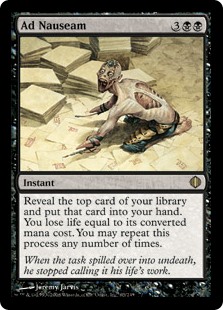 The past few months have changed everything. Obviously, losing the competition from Ironworks is a boon, but that wouldn't be enough on its own; Ad Nauseam was already in decline before Ironworks became a thing. The real secret is Phoenix's rise. The obvious benefit of Phoenix being the most popular deck in Modern is that it doesn't interact with Ad Nauseam's combo. At most, Izzet Phoenix has a couple Izzet Charms maindeck and a couple Spell Pierce and/or Dispel in the sideboard. That just isn't enough against a spell-based combo with Pact of Negation backup. As Ad Nauseam can buy extra time with Phyrexian Unlife and Angel's Grace, it has a very good matchup.
The past few months have changed everything. Obviously, losing the competition from Ironworks is a boon, but that wouldn't be enough on its own; Ad Nauseam was already in decline before Ironworks became a thing. The real secret is Phoenix's rise. The obvious benefit of Phoenix being the most popular deck in Modern is that it doesn't interact with Ad Nauseam's combo. At most, Izzet Phoenix has a couple Izzet Charms maindeck and a couple Spell Pierce and/or Dispel in the sideboard. That just isn't enough against a spell-based combo with Pact of Negation backup. As Ad Nauseam can buy extra time with Phyrexian Unlife and Angel's Grace, it has a very good matchup.
The secondary benefit is the impact Phoenix is having on the metagame. Thing being everywhere puts Humans is in a bad spot, and the loss of a major predator lets the prey thrive. Furthermore, it is changing player's focus away from relevant interaction. Phoenix makes players care about the battlefield and graveyard, and focus their interaction there. Ad Nauseum doesn't care about either, and thus is gaining equity. UW Control should be a bad matchup for Ad Nauseam because of all the counters, but those are being replaced by removal. I expect this trend of decks riding Phoenix's coattails to continue for some time.
London Ahead
The are a few more GP's ahead of Mythic Championship London. It will be exciting to see whether players further adapt to the Phoenix metagame, and how those adaptations hold up with the London Mulligan in practice.




I dont think Pheonix is any stronger than grixis deathshadow. I also think there is no need to ban faithless looting, which some people are using these stats to claim. It doesnt meet the typical standards: if anything, faithless has allowed for a variety in modern. I’d think tron would have a good matchup against pheonix since it can main board relic and play it while waiting for tron to come online.
I agree with what you said that it seems like a lot of people are trying to beat the wrong things against the Phoenix decks. And I think it’s because on the surface, it appears that you have 2 different game plans to hate out…the graveyard Phoenix interaction, and the crackles/thing beatdown plan when in actuality they only really have one game plan, which is to cast as many instants and sorceries they can cast each turn cycle. And THAT is the axis that I’ve had success beating them on. Stuff like chalice, 3ball, eidolon of rhetoric, etc. just slow the deck down to the point where all their cards are pretty mediocre.
I played a pheonix deck recently with a janky deck recently. Smallpox on turn two won the first game. Small pox on turn two and again on turn four made the game last forever, despite me never once playing a threat. Pheonix has its weaknesses. A lot of its cards, while synergistic, do nothing but draw more cards. I understand the beauty of that, but it also opens the deck up for disruption since izzet plays very little disruption itself and only bolts.
There was a period around a year ago when the metagame share of 5C Humans on the SCG circuit was just as crazy, and all the while the SCG writers were publishing articles with titles like like “play Humans or be wrong”.